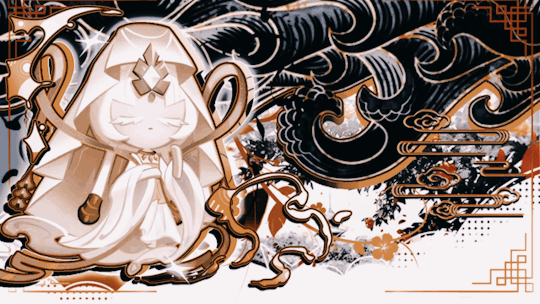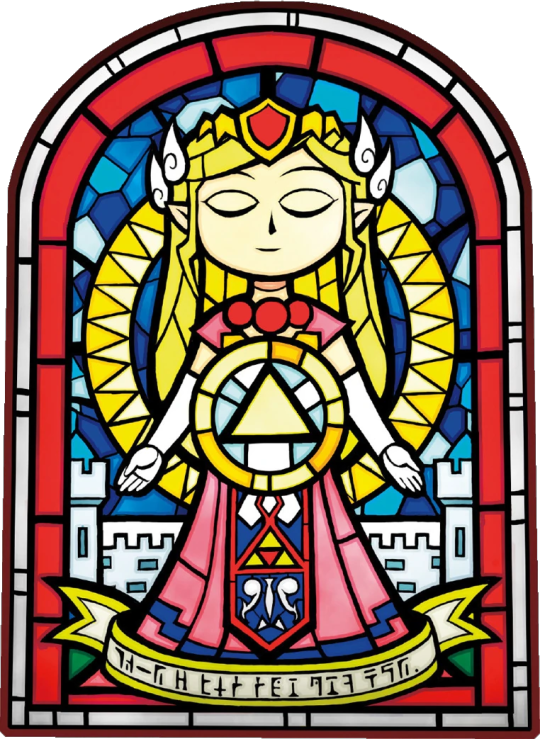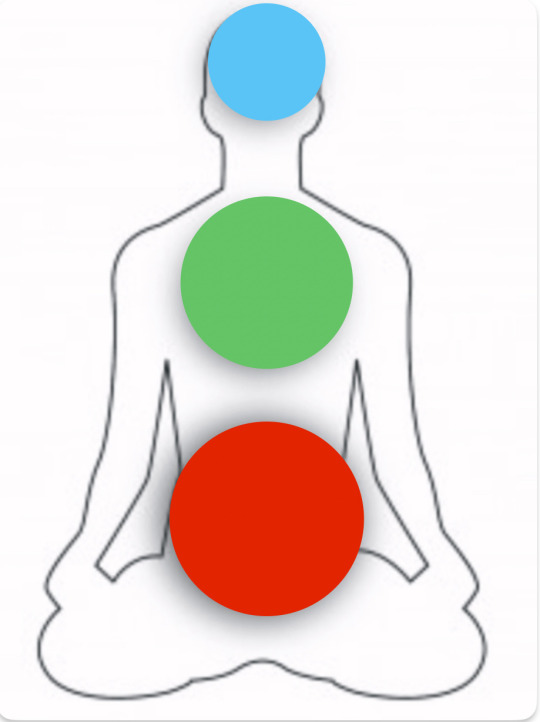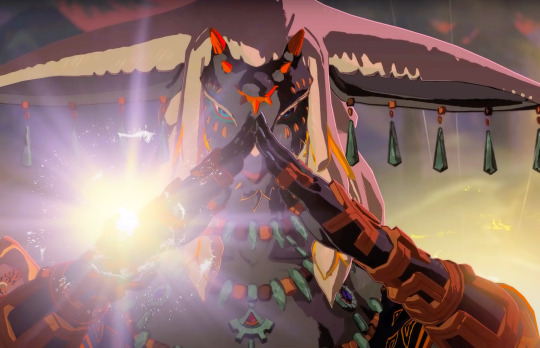We're the cryptid system and we do witchcraft. We're a selective pagan as we like to call it which is similar to eclective paganism except we fully research the practices and religions we bring into our lives and figure out what eactly is closed, etc. We're Gaelic Celtic, Heathen, Kemetic. I dislike new age spirituality but especially "Law of attraction", "Threefold law", Wicca, etc. Y'all are always the most victim blaming bigots ever. And then with Wicca... Read above and it should be obvious why I don't like a religion created by a christian that takes every single thing out of their context and melds them into a steaming heap of hot garbage that just barely fits together enough to convince people that it's a good religion
Last active 60 minutes ago
Don't wanna be here? Send us removal request.
Text
Pop Culture Entity Challenge: Hircine, Part 1
Stolen from @highpriestness
This is meant to be a sort of bonding and questionnaire in regards to spirits, entities, and deities you may work with in Pop Culture.
You can use it as a 30 day challenge, an ask meme to ask for questions, or simply write them all however you feel.
Keep reading
12 notes
·
View notes
Text
soul gem tarot spread!

i made a tarot spread for irl puella magi (specifically those looking for guidance regarding making a contract), so i hope it helps anyone who needs it! it can be altered for usage if you're not a puella magi as well.
i also recommend placing an object to invoke kyubey or madokami (or any patron, matron, or spirit guide) between cards 1 and 2, and an object that will be your soul gem or an adjacent item between cards 1 and 7.

card 1: represents you and your deepest desire, whether that is known to you or not.
card 2: the wish you plan to make, and how it will affect you.
card 3: what motivates you to make this wish; your source of hope.
card 4: what outward actions you have to take to have this wish granted, outside of the contract itself.
card 5: what could potentially lead to despair, or the possible drawbacks of your wish.
card 6: what in your mindset needs to change to avoid despair.
card 7: what is grounding you, or what is holding you back, depending on context.
58 notes
·
View notes
Note
I saw you have a link in your pinned post about where to start with hellenic polytheism. Do you have anything like that for Sumerian polytheism?
Unfortunately no, I never had the energy to make one that intense for Sumerian. So here is the best I can do now. Revivalist Perspective.
I used "Mesopotamian" over Sumerian here because research cannot be parsed out to "just Sumerian" it will always include Akkadian and all time periods. However, in this post, when it comes to Gods, I am discussing their role in the Sumerian pantheons. Not later Akkadian with Babylonian Marduk or Assyrian Aššur as king. "Mesopotamian Religion" is kind of a misnomer, there were multiple religions, pantheons, and related but distinct cultures. These are usually broken up in academia based on time period for example Ur III vs Neo-Assyrian; by city Uruk vs Isin; and by the ruling "ethnic group" such as Amorites vs the Kassites. It is a maze of information, you don't have to be concerned about it in the beginning but I just wanted to mention that there is a large variety of religious traditions.
Diĝir Sumerian for God/Goddess. Diĝirene is plural.
🌾 To begin I suggest:
Learn a bit, even just reading Oracc's information, on the Diĝir.
Get some water (or other drink, especially beer) for them.
Offer them up some words of praise, tell them the liquid is for them.
"Holy An, Unalterable Decision Maker, Who Determines The Place of all Diĝir. May this water show my reverence for your power."
Pour the water out.
Tah dah you worshiped a Diĝir.
Now go learn some more.
Rinse repeat adding to your worship as you learn.
Practicing and learning can be side by side events, doing both at once.
Your research doesn't need to be academically intense like your taking a course. Go at your own pace when researching information, and don't force yourself to read things you won't understand. But don't neglect it either it's still important to learn, especially about the Diĝirene themselves.
Don't fear making mistakes. If you do something you think is a mistake simply say sorry and give a libation, that is enough. Thus don't be afraid to start despite little knowledge — the Diĝirene will not be mad at you so long as you are a sincere worshipper.
🌾 Learning
Use a combination of Frayne, Black, Leick's dictionaries and Oracc to learn about a specific Diĝir (linked below). Sources will conflict with each other. This can be due to multiple reasons: publication timing & something being out of date; differences of opinions/interpretations of the academics; differences in translations by academics; and honestly I think Assyriologists just enjoy fighting each other...that is only half a joke.
In other words, be willing to combine the things you learn into your own composite view of information on any Diĝir. Actually basically any topic in Mesopotamia.
My Post on Resources for Researching — Link
Some tips:
Make sure it's a reliable source. Vetting sources — Link
Focus on academics of various disciplines especially Assyriologists; but also archeologists; anthropologists specializing in that region; historians whose topic is related.
Websites specifically designed for Mesopotamian History by academics / academic institutions.
Check the publication date. If the date is newer it probably is more accurate. Unless the concept is 100% novel, in which case they will usually explain why this new interpretation is more accurate.
Use three sources. If source A and B conflict. Search for source C and see if it agrees with A or B. ... sometimes it'll agree with neither.
Being real for a second as a worshipper: sometimes something from an academic will just resonate with you and sometimes it just won't. For example Jacobsen's view of Inana did (link); while Boterro's view of religion lacking love did not (link). Despite both being Assyriologists.
Links to Dictionaries, Websites, Online Books etc — Link
Not available online but I highly suggest:
A Handbook To Life in Ancient Mesopotamia by Stephen Bertman 2005 for general Mesopotamian history — Google Books 43 pages available
Introduction to Ancient Mesopotamian Religion by Tammi Schneider 2011 — Google Books 33 pages available
Both are written for the average reader not academically thick.
❗️If you can't do a lot of research for whatever reason (disability, education level, access to information etc) then I suggest reading Jeremy Black's dictionary cover to cover like a book. Some info is outdated, but if it's all you can manage it's a good way to have a base of knowledge for your practice. And it is free online.
For more information about learning see the part about Inana below.
🌾 Prayer & Praise
In Mesopotamian cultures giving praise to a Diĝir is important. Period. Even if it's "you're awe inspiring" or something else simple.
For prayers you can say what you feel comfortable with in the moment, you can write your own, you can adapt from the ETCSL or other reliable translations. I suggest reading through the ETCSL hymns or other reliable translation to get a feel for how the Diĝirene were praised even if you don't use those hymns directly.
Something specifically about that Diĝir, or lines taken from the ETCSL hymns to that Diĝir, add an extra touch to show your appreciation for them in my opinion.
Based on artwork praying position was either hands up, bent at the elbow so hands are level with your shoulders, and palms facing outwards. Or hands clasped together at your sternum. The first one is easier if you have a cup in your hand.
ETCSL Hymns — Link
How to end Mesopotamian prayers — Link
Prayer to a personal Diĝir adapted from ETCSL, can be replaced with a named Diĝir — Link
🌾 Offerings & Libations
I do not have a historical example of a Mesopotamian libation or offering incantation or prayer so I use the steps I outlined in the first section.
Say a prayer, designate the offering as for that Diĝir/Diĝirene then:
Any libations should be poured out and made "unrecoverable"
Food is eaten
Objects offered can either be used or set aside on an altar/shrine.
Incense is lit and let burn to the end if possible.
Mesopotamian Offerings — Link
Historical Incense — Link
Low Energy / No Energy offerings — Link
I consider this is fundamentally necessary in Mesopotamian tradition. Hence the low to no energy offering ideas.
🌾 Altar / Shrine
The most important thing to Mesopotamian religious cult was the animated cult statue. While you don't need an altar/shrine I do suggest having a spot for them with a representation if you can. The Word Cult — Link
There were also street shrines located in the city for the average (acceptable) citizen to use, but I don't know anything about them except that they existed. So I stick to what is known about temple cults.
The representation doesn't have to be a statue it could be anything so long as it is chosen thoughtfully, is clean, and specifically set aside as a representation for them not used for anything else. For example for me: Gibil is a candle, Dumuzid is beads, Ninazu is a pendant, Damu is a snake ring that I will not wear... so on.
Assuming you don't have to worry about being secret: Put the representation in a clean spot, and you would add something like an incense holder to light some (alternatively a good smelling candle), or a bowl/cup to use for libations.
Again, this isn't absolutely necessary. However, with the importance of temples and cult statues in Mesopotamian history, combined with the fact that we don't have a dedicated priesthood at a temple in our cities/towns to diligently worship the Gods, I think its a good way to adapt a very important aspect of the religion to the modern world.
There is no difference between altar vs shrine. The Sumerian dictionary gives 18 results for "shrine" and 2 results for "altar." So usage of those words is defined by yourself.
🌾 Good Diĝir to Start With
An — Sky, Heaven, Highest Authority. He received some worship, but importantly he was frequently invoked in the worship of other Diĝirene. For example, Inana is made significantly important by An's power. He might be a good stepping stone to give your first libations to if you really don't know where to start, since he is the highest of them all and gave them their authority. His symbol 𒀭 was the divine marker in cuneiform; written at the beginning of (almost) all divine names.
Enlil — King of Gods. Since he is literally king I suggest worshipping him along side an intercessor Diĝir such as his wife Ninlil or sukkal Nuska. Then again that advice could go for any high ranking Diĝir.
Enki — He is significantly more involved with humanity than An or Enlil is. He is usually the Diĝir willing to help humans in myth (like the flood myths), or willing to help other Diĝir that have deemed unworthy of help (like Inana in her descent myth). In one myth he is also the Diĝir who brings order to the world. He is also in some ways the source of life as he is fresh water.
Utu — The Sun and Justice
Nanna/Suen — The Moon and Cycles (time, the tides, etc); also fertility of cows.
Iškur — Storm God
Gula — Goddess of Health
Inana — See below.
Dumuzid* — [Edit] Shepherd, Milk, Agriculture, Spring Vegetarian, (later) Power of Grain
*Treasures of Darkness by Thorkild Jacobsen (1976) Chapter 1 is a very good resource for this, even if his opinions on Inana are not always agreed upon, I have found his conclusions on "Dying Gods of Fertility" to be accepted in academic literature — Google Books [Edit] I messed up with wording and used "Dying and Rising God" which is an archetype idea proposed by James Frazer in 19th century and his iteration of this concept is rejected. I meant to write what Jacobsen uses "Dying God of Fertility" which discusses his death and possible return outside Frazer's archetype framework and based on an amalgamation of different local cultus and ancient texts. Frayne's Dictionary p 75-77 is also a good overview of his roles.
🌾View of The Diĝirene
A pantheon of over three thousand gods seems too large to consist solely out of distinct, well defined natural and cultural agents, and in fact it didn't. The most important agencies are covered by a relatively small and stable core pantheon of some ten to twenty deities of nature, in the texts summarized as the seven or twelve "Great Gods". These few great gods, the ones that "determine destiny", constitute an overarching national pantheon, while the many lesser gods, the "gods of the land", head local city panthea, or serve the courts of the great gods in specialized functions: spouse, child, vizier, herald, deputy, messenger, constable, singer, throne, weapon, ship, or harp. — The Mesopotamian Pandemonium by Frans Wiggerman Link
There are many more Diĝir, even extremely important ones. Those I listed are very straight forward in my opinion and thus good options for someone just beginning. Except perhaps Dumuzid where I messed up.
In Mesopotamian Religions we are not equal to the Diĝirene we are below them, that is undisputed. Unless you are an Ur III king... and even then those divine Kings were below the cosmic Diĝir.
Serving the Gods was of high importance. My opinion, based on ancient texts, about how modern individuals can "serve the Gods" without temples, theocracy, or religious tax etc is to maintain 'The Order' — Link.
While Mesopotamians feared their Gods I don't suggest adding that into your religious mindset until you can really understand it and divorce it from anxiety, self-esteem, self-doubt, trauma, etc— which I doubt is easy.
The important part is: their love is not unconditional for example you could lose their favor if: you cheat on your partner, snub the poor, or purposely try to curse a God (which occasionally happens on TikTok). Additionally, they embody the forces of nature including destruction.
You can lament to them about dire situations and seek their help and guidance; lamentation is said to sooth their hearts. But again divorce this from "Gods are mad at me"
🌾 A Word About Inana
Usually spelled Inanna, I use ETCSL proper noun spelling. She probably has the most available information but also the most misinformation unfortunately. Straight up disinformation as well in my opinion.
She was a Goddess that spread far and wide geographically and is found in basically every time period of Mesopotamian history, and spread to many neighboring cultures. She absorbed many local Goddesses and covered many aspects of life, depending on which culture, location, and time. Most well known for fertility, love/lust, great power, and war.
While she is a very utilitarian Goddess, I only suggest starting with her if you know how to parse out the disinformation and misinformation spread about her. Which can be done but it will take a bit more diligence when researching.
Good ways to do that:
🔹Stick to academic sources where the author is an Assyriologist or historian in a related field like ancient literature or archeology.
Good book specifically for her would be Ishtar by Louise M Pyrke (2017) Google Books 57 Pages Available
If you're willing to learn about numerous Goddesses at the same time the book: Goddesses in Context by Julia Asher-Greve and Joan Goodnick Westenholz (2013) PDF Book Full
Do not use neo-pagan, new age, occult, witchcraft, by polytheists-for-polytheist, books about her.
Don't use books written by Jungian Analysts. My beef with them is A.) Jungian archetypes specifically are inherently Euro-centric western and try to shove all world cultures into them. B.) Every single piece of information on Mesopotamia I have ever read from these authors is always inaccurate C.) Education/Degree/License as a Jungian Analyst is not an academic credential for Ancient Mesopotamian resources. | If you work with archetypes in your religion that is up to you, but as sources of accurate information these authors are not useful.
People often try to find sources on a singular Mesopotamian God, but thats very uncommon. If you want to learn about any Diĝir in-depth you will end up reading articled and books on a variety of ancient religious topics.
🔹Utilize translations by academics not other sources:
ETCSL Inana Entries: Inana Myth — Link • Inana & Dumuzid Myth — Link • Hymns to Inana — Link • Hymns to Inana & Dumuzid — Link
The Harps that Once by Jacobsen (1987), Google Books 109 Pages Available
Enheduana by Sophus Helle (2023), Google Books 58 Pages Available. Companion Website Link, he offers up other translations for the same compositions too.
Not Inanna Queen of Heaven and Earth by Diane Wolkstein. A good story but not fully faithful to the ancient story as it shoves compositions together leaving out entire sections of those compositions. It then presents those 3 hacked up compositions as if they were one story and changes the meaning of some. All of the actual compositions are available on the ETCSL in order of how she used them: Inana-Dumuzid A 4.08.01; Dumuzid and Enkimdu 4.08.33; Dumuzid-Inana I 4.08.09. Her "Introduction" barely goes a sentence without misinformation.
Not Lady of The Largest Heart by Betty De Shong Meador, no translator credentials. Shes also a Jungian Analyst.
Nor anyone else that doesn't have direct credentials to translate Sumerian or Akkadian.
.▪️.
I hope this is helpful in some way.
-Dyslexic, not audio proof read-
14 notes
·
View notes
Text
Me when I see something related to my deities in public

1K notes
·
View notes
Text

A masterlist of associations for ; ༄。°
⌞ The Lonely / Forsaken / One Alone ⌝

→ fog , mist , smog , steam , smoke , condensation , colder temperatures , gloomy weather ( cloudy , rainy , stormy ) , blue-grey & turquoise colours , faded / washed out earth tones .
→ rocky beaches , bogs , heaths , blue hydrangea , bulrush , creeping willow , moonwort , wormwood , harbour seals , shoebills .
→ traveling , wandering , meandering , lighthouses , piers , small cafés , desolate cities , grimy flats , abandoned buildings , trains , boats .
———-
→ ( faceless ) crowds , human-like things that lack personality , silence / near silence , coloured noise ( specifically white , grey , and brown noise ) .
→ fatigue , sea sickness , secrets , creaking , numbness , melancholia , early mornings , ghosts , musk & saltwater scents , mother of pearl , anhydrite , moonstone , smoky quartz , marekanite .
→ hot drinks ( tea , hot cocoa , coffee , warm milk , apple cider ) , bland and / or salty foods ( seafood , canned foods ) , tobacco .
———-
→ chunky sweaters , hoodies , trenchcoats , sturdy boots , worn & ripped trousers , fingerless gloves , baggy / oversized fit clothes .
→ messenger bags , journals , handwritten notes / letters , morse code , blank books , empty containers , polaroids , locks without keys or vice versa , anchors , bare lockets .
→ thick quilts , down pillows , driftwood , steel + brass , clocks / watches , useless trinkets , gas lamps , umbrellas , bottles , sea glass , rope knots , wooden furniture , chipped dishware , cracked glass .
———-
( ⏲ This list contains canon manifestations & more from personal experience ! It will be updated whenever I find something that should be added . )





14 notes
·
View notes
Text
this may be too wild of a post and idk how many people are gonna agree with it (as i'm someone who thinks pop culture entities inherently exist in some form one way or another) but yknow. it's my blog and i can post what i like here.
so, idk what virtual pet-loving person needs to hear this but nothing is stopping you from working with your virtual pet as a magical entity, spiritual entity, servitor, spirit companion, friend, family member, or familiar.
u like pokemon? work with pokemon. u like neopets? work with neopets. have a tamagotchi that's old enough to graduate? work with it and see where it takes you.
despite practicing pcp/pcm for a long time it took me... a really long time to realise i can just do this. with virtual pets specifically. i can experiment, i can see what happens, and i'm allowed to make my practice more fun.
248 notes
·
View notes
Text



I've been intrigued by the idea of Pop Culture Paganism and decided to make a prayer bead style necklace for the Beholding from The Magnus Archives. Of all the Fear Entities from the Series, the Beholding is one of my favorites, and one that fascinates me the most.
With the right pendants I would also like to make some for the Spiral and the Stranger, two of the others that fascinates me.
24 notes
·
View notes
Text
The disabled witch experience
- Doing a bath/hot tea/candle ritual and having to have cold water with you so you don't pass out
- Having food not for offerings (and some for) so you don't pass out
- Not able to do standing/physical rituals so you adapt them to be sitting/laying down
- Making a daily thanks ritual out of taking meds
- being unable to use certain items due to it irritating lungs/skin/etc.
12 notes
·
View notes
Text
. : Mystic Flour Cookie - Correspondences : .

Element: Air / Water
Epithets: The Enlightened Apathetic One, The Master of Apathy, The Master of Volition
Imagery/Symbolism: Light Symbolism, Golden Symbolism, Apathy symbolism, Asian inspired imagery, Clouds, Minimalism
Magic Types: Meditation, Shadow work, Cleansing Magic, Healing Magic
Crystals: Selenite, Howlite, Blue lace agate, Moonstone, Pearls, Blue Calcite, Celestite, Clear Quartz, Lapis Lazuli
Colours: White, Gold
Tarot Card: The High Priestess, Temperance
Scents: Jasmine, Coconut, Lavender, Frankincense, Strawberry, Cherry, Myrrh, Sage, Lotus
Numerology: 0, 1, 4, and 7
Herbs: Lavender, Mint, Marjoram, Angelica, Lemon Balm, Mugwort, Chamomile, Peppermint, Rosemary, Star Anise
Offerings: White Candles, Asian food, Herbal Teas, Water, Lotus Flowers
Devotional acts: Meditate, Play cookie run kingdom, Look out for yourself, Honour her, Cloud Haetae Cookie, and the other beasts.
What to work with her on:
Emotion Work
Meditation
Healing work
Shadow work

15 notes
·
View notes
Text
Hi! I'm interested in starting a homestuck based self improvement game, called Swurb. It was named after wishqueers but it is open to anyone! You can be a casual player or a committed player, but the basics is it involves basic divination (or intuition), spells, and self improvement goals!
I'll include some more info and a link to a server for discussion under the cut!!

7 notes
·
View notes
Text
A Quick Set of Correspondences
Hircine: Pelts, Foraged Items, Lunar Symbology, Natural or Organic Incenses, Animal Bones, Raven Feathers (Symbolic of the Hagravens), Meat, Dog Symbology, the Colour Red, Seal Symbology
Jyffre: Avoid plant material on the altar, left over meat from dinner (eaten after rituals to ensure the fulfillment of the Green Pact), maintaining of the natural world by libating trees and plants, horned creatures, animal products like clarified lard, butter, meat, keeping green plants on the altar but not harming them.
Namira: Decomposers, Mushrooms, Meat, Never Lighting Candles at her altar, filth and decay, graveyards, a sacrament being made of cooked meat (for safety), the hour of midnight, Saturdays and Dark Moons.
Nocturnal: Keys, Mirrors, keeping her altar shrouded in the morning, new moon and full moon rites, praying to her alongside Azura. She shares sabbathic symbology with Azura in Purloined Shadows, money, jewels, raven and crow symbology, magpies or stealing birds, grey cloth, fasts of silence, keep her altar in the dark when working with the shadows of Past Nightingales.
Sheogorath: Ouranic/Manic altar is kept off the floor, Dementia/Chthonic Altar is kept on the floor. Cheese, cabbages, representations of the head, bones (of Pelagius), mirrors, gold and dark blue fabrics, a blade for the invocation of the Seducers and Saints, Hallucinogenic Items and Plants on the Manic Altar.
23 notes
·
View notes
Text
Invoking the Shadows

"Absolutely. When we say "walk with the shadows", we are asking those Nightingales that have passed on to protect us. It's believed that they are literally what guides our uncanny luck... by placing their hands in ours. That's why the Ebonmere needed to be reopened. Without it, there's no way Nocturnal was able to allow them through." - Karliah describing the Ebonmere and the Spiritual Nightingale
Having consecrated a key or some form of implement to Nocturnal, let it be placed over a bowl of water. There should be no light in the room.
Preferably, as noted in Purloined Shadows, the magician or priest should be nude, wearing only the Shadows as their garment. Alternatively, black clothing can suffice.
The Opening of the Ebonmere
Let the implement be taken and tap the top of the water. Feel the gateway open up:
Holy Nocturnal, Mother of Thieves, Guardian of the Three Stones of Strife, Shadow and Subterfuge, Mother of Night and Guardian of Witches, hear us, graciously hear us.
O' Mother whose distraction is befitting of thieves, Sister of Azura, Night Mistress, Lady Luck, Patron of the Gray Wolf, Enigma, Noxifera, Lady of the Void, O' Ur Dra
By PSJJJJ, see fit to open the Ebonmere. Let me feel the embrace of the Nightingales.
Chant Ur-Dra repeatedly
"O' Those of the Cloak of Noctra, Ur-Dra, the Goddess of the Evening, I petition thee. See fit, by the Will of Nocturnal, the Abyssal Queen, to protect me against unwanted influence. Guide me to walk in the Shadows of the Cloak of Nocturnal, bestow luck upon me through the Lady's Grace.
Anoint the brow with the Ebon Water
Strike my name from the tongues of my enemies. Let their visage of me being taunted and disuaded. Wherever they should act, let them only find mists and shadow.
Shadows be with me and mine. Fiat!
17 notes
·
View notes
Text
Great Hermaeus Mora, Prince of Knowledge,
guide my hand.
Lead me to the right cards to see, to hear, to understand, to feel the very truth.
I perform this reading with high respect and reverence,
towards you, Great Herma-Mora.
5 notes
·
View notes
Text

Made this custom jjba tarot spread inspired by the stone mask! 🩶
22 notes
·
View notes
Text
Hyrulean Force Cultivation

This is to be the beginning of my writings on basic Force Cultivation.
In The Minish Cap, we are first introduced to the concept of Force in the form of the Light Force as a power contained within Princess Zelda. In Phantom Hourglass, we learn of Life Force which is a sacred power within all living things. In the Japanese versions of the games, both are referred to simply as Force.
As has been said before, all living things contain Force. This Force powers our bodies, minds, and spirits. Some naturally contain more than others, some less. It is possible to cultivate this Force into greater vitality and power.
Force flows through our entire being and is centered in points within the internal subtle structure of the body called Force Gates. In these basic practices, we will focus on three primary gates.

Gate of Power: Located just below the navel
Gate of Courage: Located in the center of the chest near the heart.
Gate of Wisdom: Located in the area commonly known as the Third Eye.
These gates are heavily energized during the Embodying the Triforce technique and balanced. Once so Force is flowing through the body, it is important to bring it back down to the area of the Gate of Power in order to remain calm and rooted. This excess Force that has been brought into the navel can then be consolidated and stored. This will over time cultivate a container which will hold consolidated Force that can act as a battery to continue powering the body.
I like to call this container my Force Gem. Force Gems are introduced in Four Swords Adventures as crystallized Force that powers the Four Sword. The Sand of Hours in Phantom Hourglass is made of ground up Force Gems. They also appear in Spirit Tracks and empower those titular tracks.
This Force Gem you cultivate, rather than being pyramidal like in the games, will more likely be round like a ball. The process is begun by sitting in as upright a posture as the body can manage. Preferably with crossed legs on a cushion or the floor, but accommodations can be made for level of ability.
Begin by breathing through the nose deeply into the abdomen, allowing it to inflate. Exhale slowly through the nose, allowing the abdomen to deflate. Settle into yourself and find a comfortable rhythm. Raise the arms with the palms facing downward. The Force Gates in the hands serve to move and work Force like a guide. Start above the head. My favorite way to position my arms is like Rauru preparing to fire his light beam

As the arms are positioned above the head, breathe deeply. Allow the Force to sink from your head, down into your chest. Spend as long as five minutes in this position if you have the time.
Next, drop the hands to just above the chest. This will push the built up Force lower again towards the navel. Spend time in this position as well, breathing deeply.
Finally, drop one hand above the abdomen and one below, like you’re holding a ball. This will focus the Force into the abdomen where it can be consolidated.
During deep breaths, fill the abdomen with Force during inhalation. During exhalation when the abdomen is compressing, so is the Force. With every breath, fill the area of the Gate of Power seated in the center of your being with Force, then compress it with exhalation. Over time, this will begin to form the Force Gem that contains Force as abundant as the waters of Lake Hylia.
Expect this beginning step to take months or years. The Force Gem will form and grow over time until it overflows, increasing vitality and spiritual aptitude.
May the Goddess Smile Upon You
-Florian Knight
21 notes
·
View notes
Note
Sorry to bother you, but I have a question about pop culture paganism that I'm curious about and you seem like the perfect person to ask.
So you know how deities can communicate with their followers via dreams? Do you think that pop culture entities can do that? For instance I've been having nightly dreams about the same video game character for months now and I'm curious if it's somehow related to my practice as a pop culture pagan.
Sorry if this is a ridiculous question, thank you so much.
you're alright mate! as always, the following will be my opinion and i don't claim to be an authority on the subject. regardless, thank you for giving my opinion the time of day. :)
i think any deity can communicate with their followers, pop culture or not. i've experienced the same with both pc entities and non-pc entities, and it's always followed the same kind of pattern. pattern being:
usually there's either a representative of the deity (like a physical messenger or a representation of a concept that the deity governs over, like for me i dreamed of doing poetry to represent apollo once) that makes an appearance, or a physical interpretation of the actual deity themself.
and then, a message they have to give you. it can be something simple like an interaction between you both to remind you they're there, or an actual message to take away from the dream.
the pattern can vary of course, but what matters is you need to differentiate between a message-dream (where they've come to tell you something) or a fandom-dream (where you're say, in the world and behaving as a character in the story they originate from). fandom dreams are for fun, where as message dreams are to be taken onboard as a gift, blessing, revelation, what have you.
so yes, i think that pc entities are capable of communicating via dreams. what i described was a huge oversimplification but yknow lol. anyhoo, to repeat myself to what i've told many people on varying 'signs': what matters is what these dreams mean to YOU! the significance is the power YOU place into those dreams, so thus it's entirely up to YOU as to whether they're to be interpreted as actually messages or not! you have the power to do that!
best of luck nonnie! i hope this was helpful.
11 notes
·
View notes